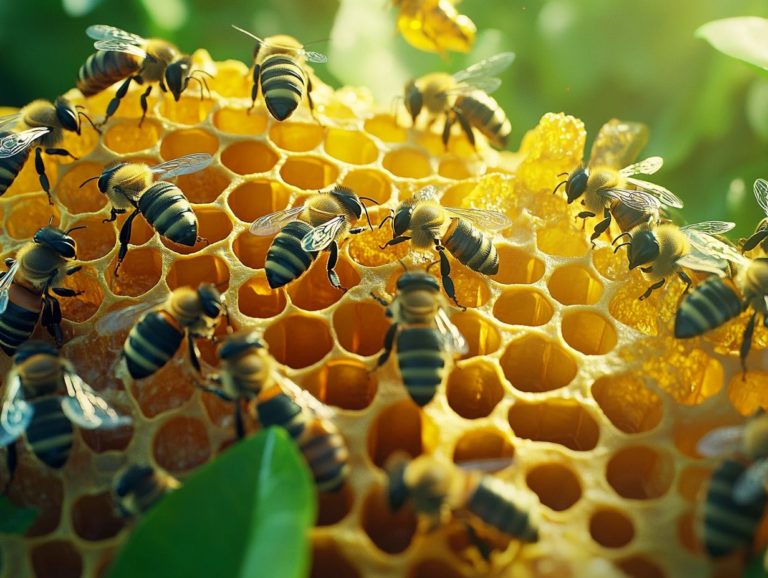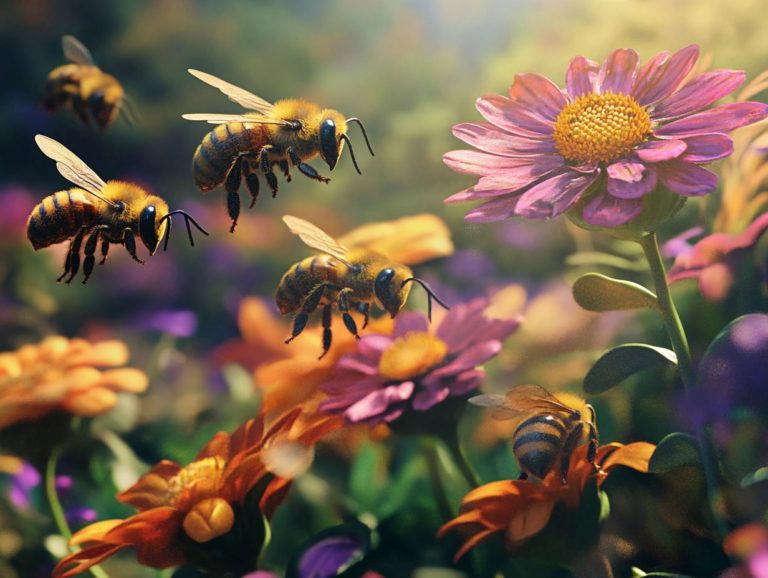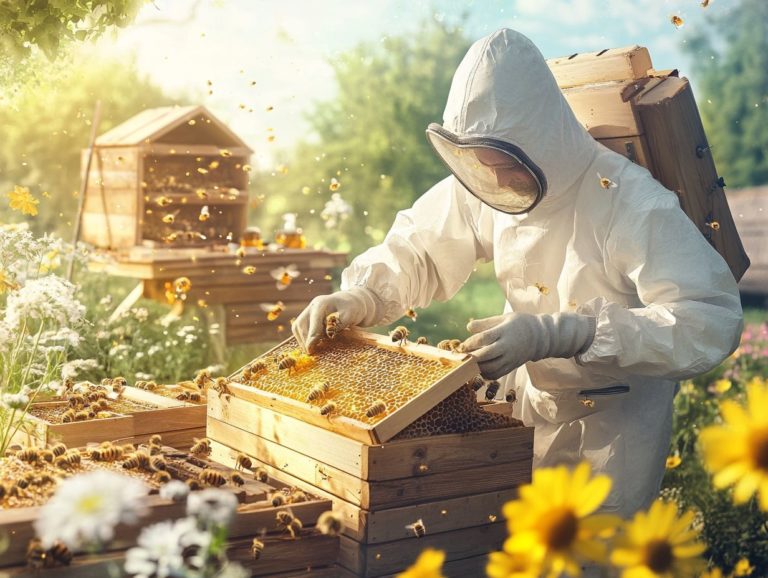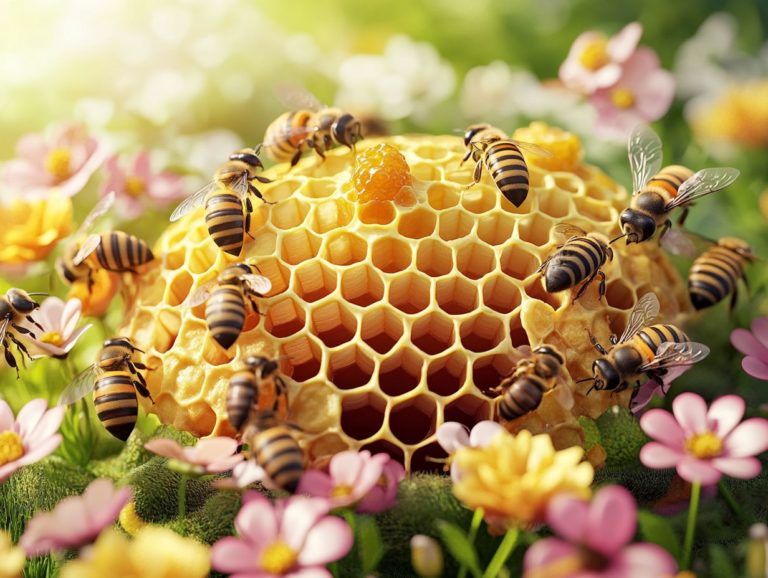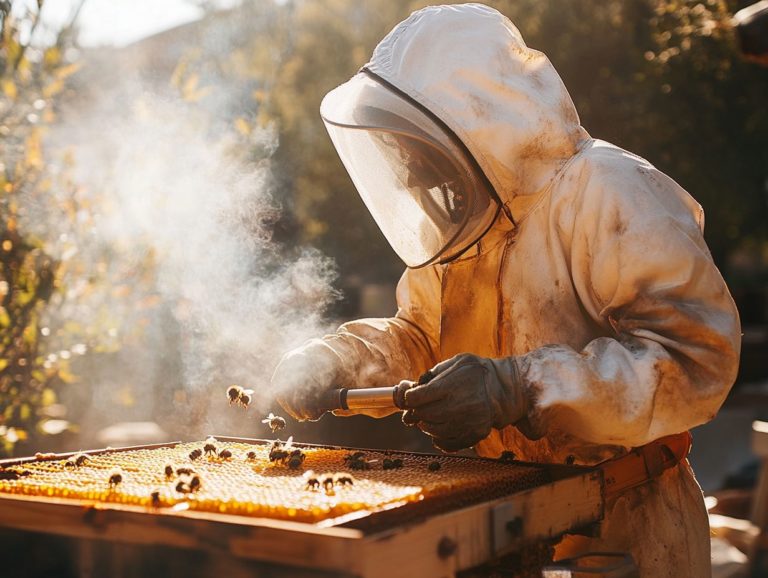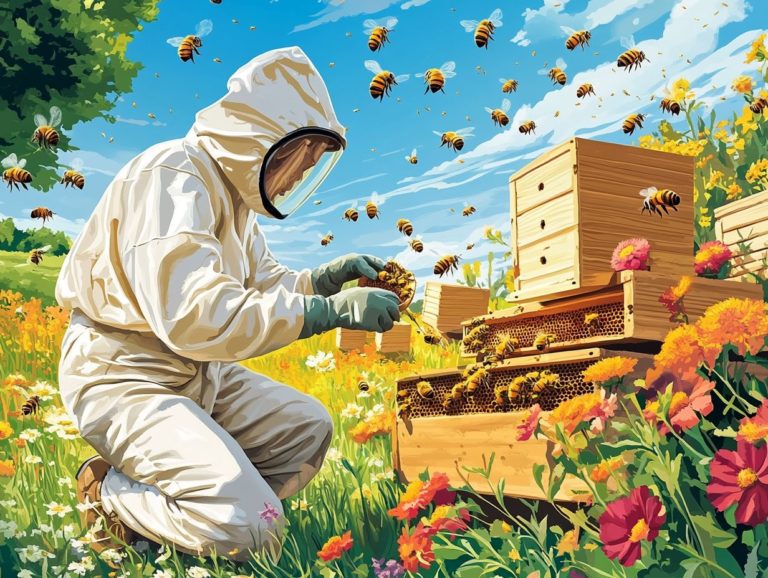Tips for Successful Hive Management Adjustments
Managing a beehive demands your continuous attention and adaptability to ensure the health and productivity of your honey bees.
You ll often find yourself needing to make common adjustments, such as adding or removing supers, requeening, and relocating hives.
These adjustments offer significant benefits, including increased honey production, healthier colonies, and better hive maintenance.
By applying practical tips, you can successfully implement these changes, enhancing your hive management skills and becoming a master beekeeper as you go along.
Contents
- Key Takeaways:
- What are the Common Adjustments Needed for Hive Management?
- What are the Benefits of Making Adjustments in Hive Management?
- How to Make Successful Hive Management Adjustments?
- Frequently Asked Questions
- How often should I inspect my hive and what tips should I follow for successful management?
- What is the importance of providing enough food and water for successful hive management?
- What should I do if I notice pests or diseases in my hive?
- How does proper ventilation contribute to successful hive management?
- Why is it important to regularly monitor and make adjustments to my hive management?
Key Takeaways:
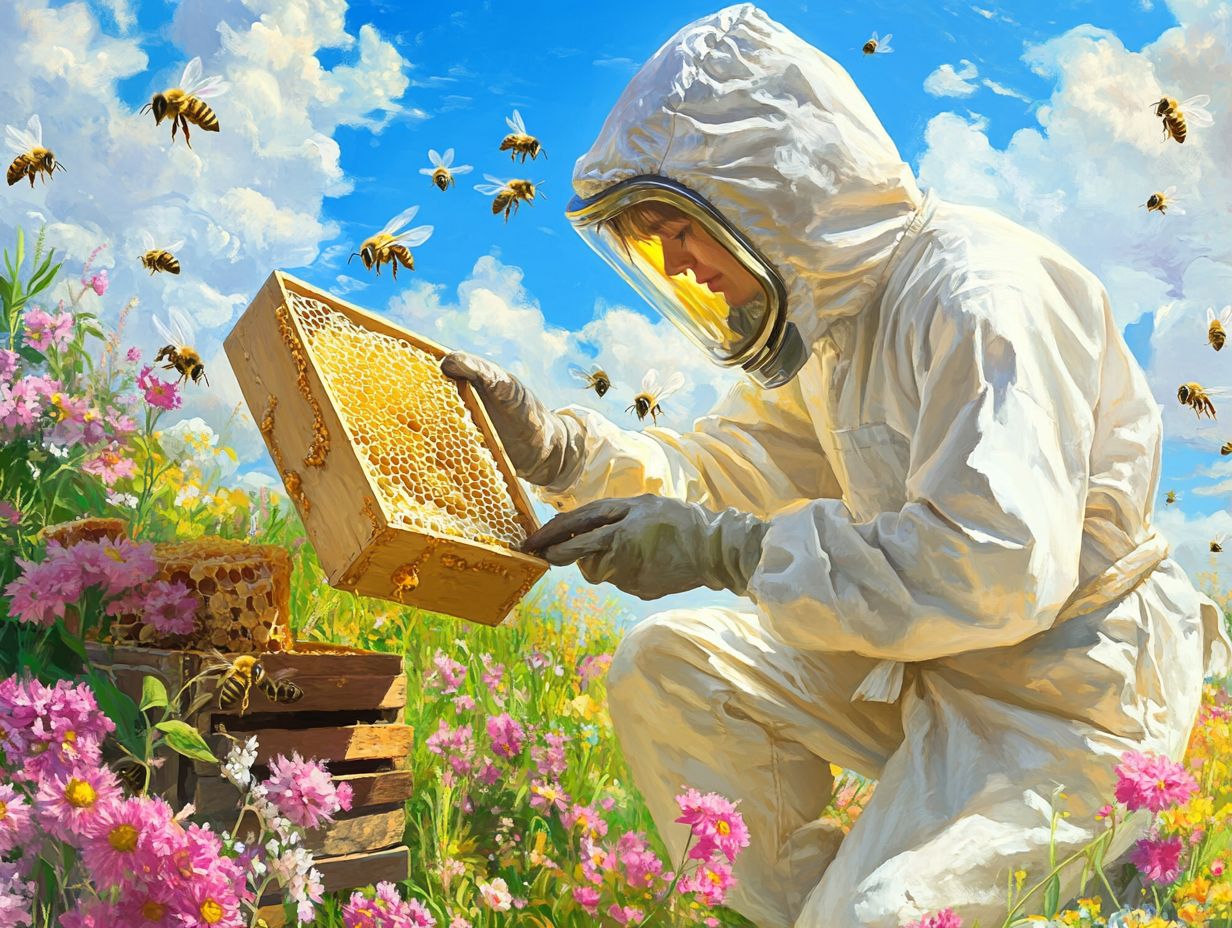
- Effective hive management adjustments can lead to increased honey production, healthier colonies, and prevention of colony loss.
- Research, planning, consultation with experienced beekeepers, attending beekeeping classes, and keeping a beekeeping journal are essential for successful hive management adjustments.
- Be flexible and adaptable when making adjustments to accommodate changing conditions, perform routine hive inspections, and improve your overall hive management skills.
What are the Common Adjustments Needed for Hive Management?
Effective beehive management requires a keen understanding of the essential adjustments that beekeepers must make to ensure the health and productivity of their honey bee colonies. This includes the strategic addition or removal of supers the boxes where bees store honey requeening hives as needed, and skillfully splitting or combining hives to manage population dynamics.
Relocating hives can optimize foraging opportunities, particularly during periods of nectar dearth. Each of these practices is vital for your colony management and hive maintenance, enabling you to maintain robust and thriving apiaries throughout the seasons.
1. Adding or Removing Supers
Mastering the art of adding or removing supers can dramatically boost your honey production!
The choice to add or remove supers hinges on the specific needs of your hive and the conditions of the surrounding environment. By closely monitoring bee activity and honey flow, you can determine the optimal timing for these adjustments. When nectar is abundant, typically during peak flowering seasons, adding extra supers allows for greater honey storage. Conversely, if you notice that your bees aren t utilizing the supers, it s time to consider their removal to prevent overcrowding in the hive.
To assess your hive’s capacity, examine the frames for signs of congestion and ensure your bees have ample space to thrive. Proper hive maintenance utilizing the right beekeeping equipment, such as queen excluders (a barrier that allows worker bees to pass through but keeps the queen from laying eggs in honey storage areas) and extractors (devices that spin honey out of the combs) can significantly enhance your honey yield and promote the overall health of your colony.
2. Requeening
Requeening involves replacing an existing queen honey bee with a new one to enhance the health and productivity of your hive, as well as reducing hive aggression. If you notice signs of a failing queen, act swiftly to avoid colony decline!
Recognizing the signs that indicate a need for requeening is essential for effective colony management. You might observe declining brood patterns, reduced foraging activity, or even a rise in aggressive behavior among your worker bees each of these could signal that your queen is failing. Introducing a healthy queen can breathe new life into your colony, significantly boosting honey production and ensuring better genetic diversity (the variety of genes within a species, which helps ensure a stronger and healthier bee population).
There are several methods you can employ for requeening, including:
- Direct introduction
- Use of a queen cage
- Rearing from preferred stock
By carefully managing these processes, you can greatly enhance the overall health of your hive, which is crucial for sustainable beekeeping practices.
3. Splitting or Combining Hives
Splitting or combining hives is a strategic approach in beekeeping that enables you to effectively manage bee populations while promoting the health of your colonies. This is particularly important for preventing issues like small hive beetles and ensuring proper rearranging of the honeycomb.
Careful implementation of these techniques significantly reduces the risk of swarming. This happens when part of the colony leaves to find a new home. It’s crucial to split hives during peak growth periods typically in the spring when your queen is laying an abundance of eggs and building a robust workforce. Regular hive inspection frequency also helps in timely detection of such risks.
This process involves identifying strong colonies and ensuring that each split contains a sufficient number of bees and brood, along with either a queen or queen cells.
On the flip side, combining weaker hives can bolster overall strength and productivity. By merging populations during late fall or early spring, you facilitate resource sharing, which fortifies the remaining hive against diseases and environmental challenges.
4. Moving Hives to New Locations
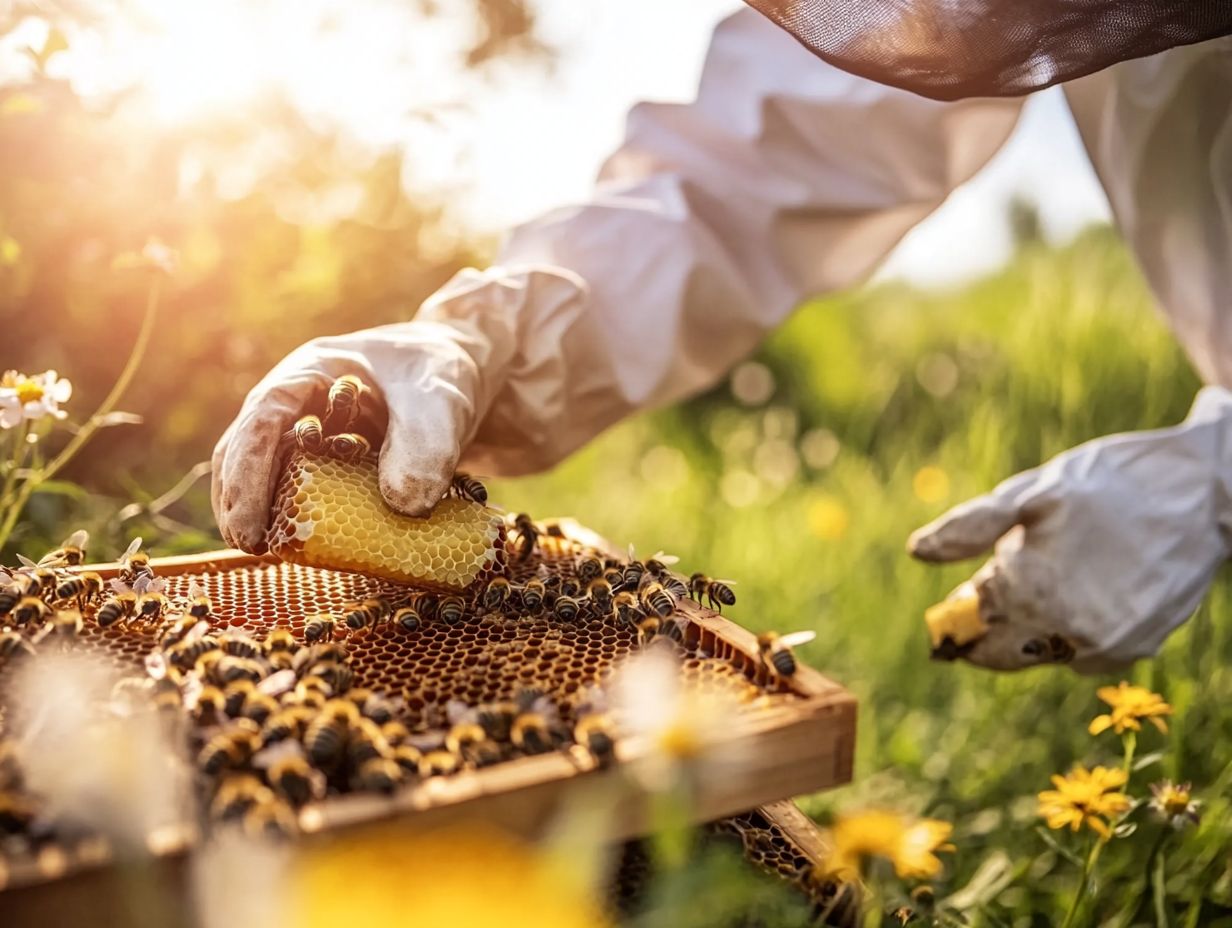
Relocating your hives to new locations can greatly enhance bee foraging and boost overall hive productivity. These actions are vital during summer hive management and autumn preparations.
When planning a move, you should prioritize areas close to abundant blooming plants, as these are essential for supplying the nectar and pollen necessary to sustain your colony. Access to an outdoor water source is equally important; bees need water for hydration and to regulate the temperature within the hive.
For a seamless transition, it’s best to move your hives during the cooler parts of the day when the bees are less active. This approach minimizes stress and potential disorientation among your buzzing friends. After the move, keep a close eye on their behavior; any changes in bee flight path or activity levels can offer valuable insights into how well they are adjusting to their new surroundings.
To maintain the strength of your colony after the move, consider providing supplemental feeding, particularly in areas where floral resources may be limited.
What are the Benefits of Making Adjustments in Hive Management?
Making timely and appropriate adjustments in hive management can yield a wealth of benefits, such as increased honey production and healthier bee colonies. By implementing proper adjustments, you create a thriving environment for your honey bees, minimizing stress factors and ensuring that your colonies are well-equipped to face challenges like hive pests and bee diseases.
These practices refine your hive management skills. As a result, you enhance your ability to prevent colony loss during critical seasons.
1. Increased Honey Production
One of the most remarkable advantages of effective hive management adjustments is the potential for increased honey production. By strategically implementing practices such as adding supers, you can provide your colonies with the essential space they need to expand and store their precious honey.
Ensuring optimal comb health is paramount for maximizing honey yields; healthy combs not only improve honey storage but also promote robust brood development. When your bees are thriving, they can forage more efficiently, resulting in a richer harvest. Together, these thoughtful adjustments cultivate a harmonious ecosystem within the hive, significantly enhancing overall productivity during the honey harvest.
2. Healthier and Stronger Colonies
Adjustments in hive management can lead to healthier and stronger colonies, ensuring that both the queen honey bee and the worker bees flourish.
By implementing effective management practices, you create an environment that encourages optimal bee behavior and robust hive health. Regular inspections are essential; they allow you to monitor the health of your colonies closely, identify potential issues before they escalate, and make necessary adjustments.
Providing your bees with sugar water for bees and a balanced diet through proper feeding techniques not only meets their energy needs but also boosts their immunity against diseases. This holistic approach to hive management ultimately results in more productive colonies, marked by increased honey production and healthier brood development.
Imagine the incredible joy of harvesting honey from your thriving colonies! Take charge of your hive management practices today for better results and satisfaction.
3. Prevention of Colony Loss
Making timely adjustments in your hive management is essential for preventing colony loss, particularly during challenging seasons.
By closely monitoring for hive pests like Varroa mites (a harmful parasite that affects bees) and bee diseases such as American foulbrood, you can spot potential threats early. Act quickly! Take the necessary actions to protect your bees. Effective practices include conducting regular hive inspections and employing combined methods to manage pests to keep infestations at bay.
When natural food sources dwindle, emergency feeding can act as a crucial lifeline. It ensures that your bees remain well-nourished and resilient.
These proactive measures not only enhance the health of your individual hives but also contribute to the overall sustainability of bee populations. This ultimately enriches pollinator services in the ecosystem. These efforts are crucial during fall preparations and winter tasks to ensure the bees’ survival through challenging seasons.
4. Improved Overall Hive Management Skills
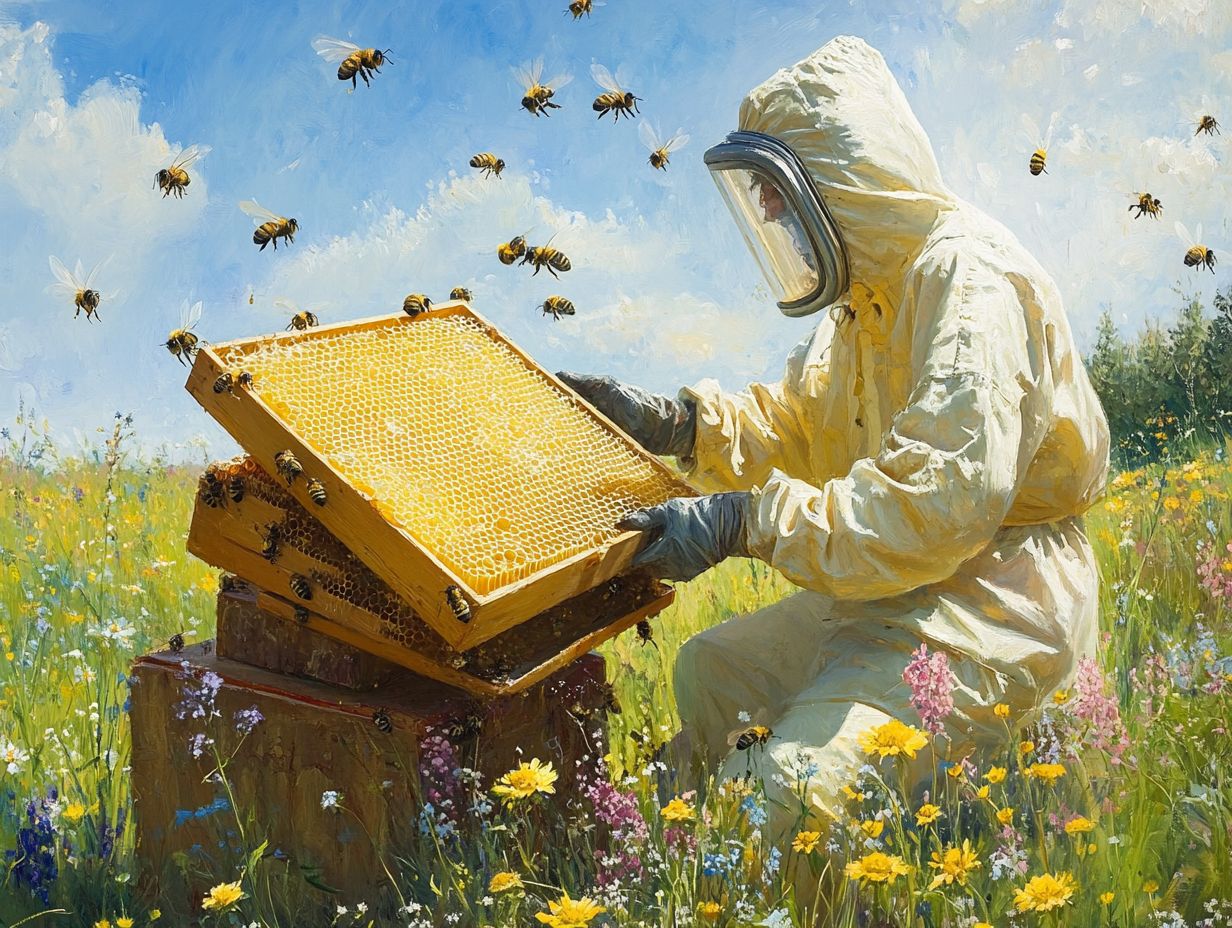
Ready to elevate your skills as a beekeeper? Dive into hive management adjustments! Regardless of your experience level, this approach allows you to systematically learn from your experiences, enabling you to identify and correct common pitfalls.
This ongoing journey deepens your understanding of bee behavior and encourages you to implement best practices that can significantly enhance the health and productivity of your hives. Enrolling in a beekeeping class is a fantastic opportunity to stay updated on the latest techniques, including the use of protective beekeeping clothing and beekeeping equipment.
The importance of continuous learning cannot be overstated! Even seasoned beekeepers can gain valuable insights and updated methodologies. This commitment ensures you can navigate the challenges of beekeeping with greater confidence and success, especially when dealing with hive pests and bee diseases.
How to Make Successful Hive Management Adjustments?
To achieve successful hive management adjustments, embrace a thoughtful blend of research, consultation with seasoned beekeepers, and meticulous record-keeping in your beekeeping journal. This comprehensive approach enables you to adapt to shifting conditions and enhance hive performance throughout the seasons, from summer hive management to fall preparations.
By maintaining flexibility in your strategies, you position yourself to respond adeptly to challenges such as hive pests and environmental changes, including hive temperature control and the presence of bee predators.
1. Research and Plan Ahead
Conducting thorough research and planning ahead are essential components of your successful hive management adjustments. They help maintain colony management.
By keeping yourself informed about the latest best practices in beekeeping, you can tailor your strategies to meet the ever-evolving needs of your colonies. Understanding seasonal hive management like monitoring temperature fluctuations and foraging patterns is crucial for maintaining the health of your hives.
This knowledge enables you to anticipate potential challenges such as pest infestations or nectar shortages. Ensure your bees remain productive throughout the year, ultimately increasing honey production.
Engaging with the beekeeping community and tapping into resources like workshops and online forums can yield invaluable insights. This creates a supportive environment for both novice and seasoned beekeepers. Ultimately, arming yourself with knowledge leads to a thriving apiary and enhances your honey production increase.
2. Consult with Experienced Beekeepers
Consulting with experienced beekeepers offers you great knowledge and insights that can significantly enhance your hive management practices. Understanding comb health and queen honey bee behavior are crucial aspects of this consultation.
By tapping into the wealth of experience that seasoned beekeepers bring to the table, you can acquire essential skills that are crucial for nurturing healthy colonies. Learning from the successes and challenges of others not only accelerates your learning curve but also fosters a sense of community support.
This collaborative spirit enables you to troubleshoot common issues, share innovative techniques such as comb rotation, and stay informed about best practices. As you navigate the complexities of hive management, both you and other keepers whether new or seasoned benefit from mentors who can illuminate effective strategies for pest control, queen rearing, and maximizing honey production. They can also give advice on how to feed honey bees when there isn t much nectar available.
Ultimately, mentorship in beekeeping enriches your understanding of the craft, enhancing both your personal growth and the well-being of the bees you care for.
3. Keep Detailed Records
Keeping a meticulous beekeeping journal is crucial for you to track the frequency of hive inspections and management practices. These records become an invaluable resource, offering insights into the health of your hives over time.
By documenting each inspection, you can identify patterns related to colony growth, honey production, bee population, and disease management. When you apply a specific treatment or implement a new management strategy, your notes will allow you to evaluate the successes or challenges faced by your hive.
This information enables you to make more informed decisions about future interventions, whether that involves adjusting feeding schedules, hive maintenance, or tackling pest problems. Ultimately, by consistently reviewing these detailed accounts, you enhance your ability to nurture and sustain healthy colonies while optimizing your yield.
Your journal is not just a record; it serves as a roadmap to beekeeping success, highlighting effective hive maintenance and honey harvesting.
4. Be Flexible and Adapt to Changing Conditions
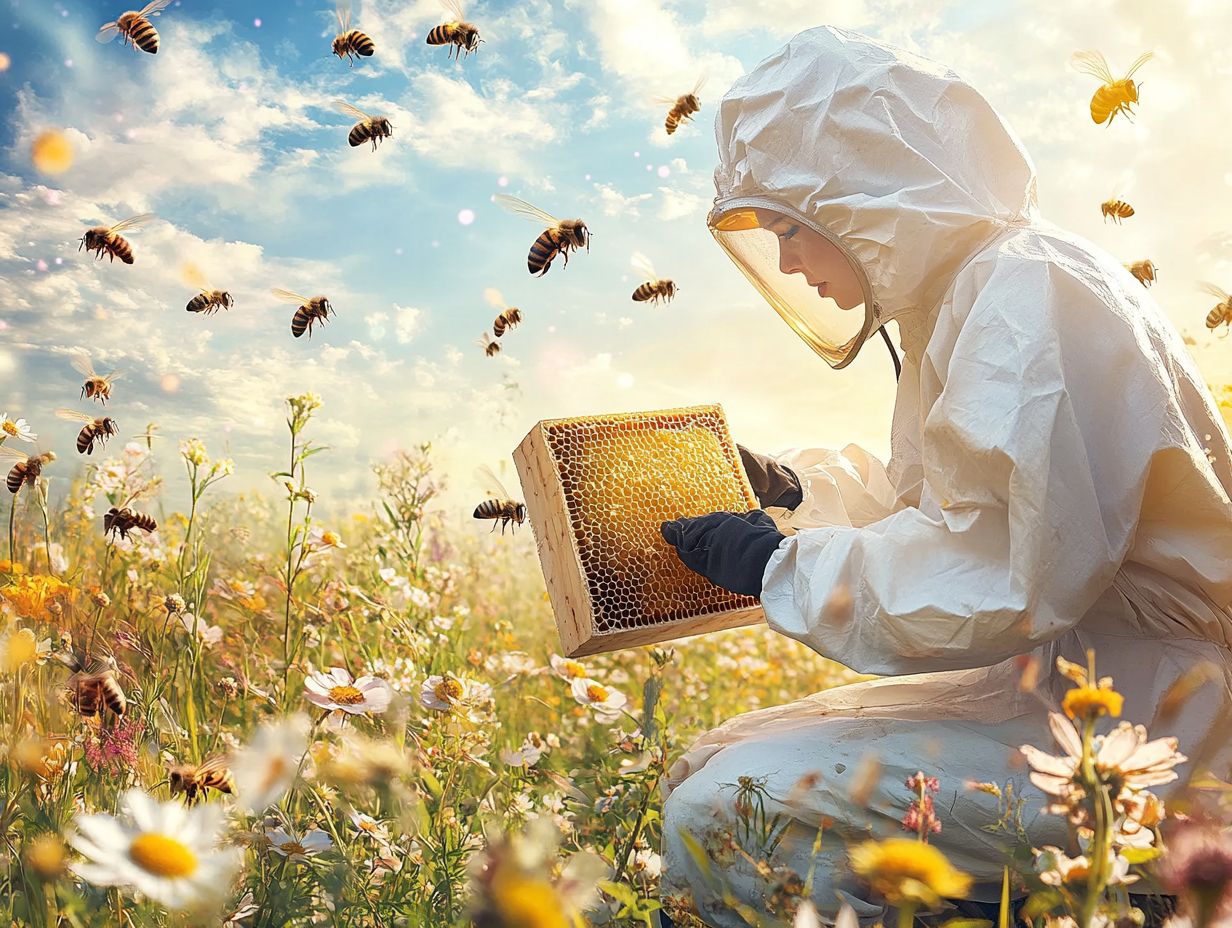
Being flexible and adaptable to changing conditions is essential for your success in hive management, especially in backyard beekeeping.
This means you must remain vigilant in observing the subtle behaviors of your bees and the overall health of your hives. These factors are frequently influenced by various environmental conditions. For example, fluctuations in temperature, humidity, and forage availability can greatly affect your bees’ productivity and the resilience of your colonies.
Consider placing an outdoor water source near your hives to assist in maintaining humidity levels. When you know the signs of hive health, such as brood patterns and varroa mite levels, you ll be equipped to make timely adjustments to your management strategies.
Regular varroa mite treatment and strength assessment are key components. By responding effectively to these elements, you can significantly enhance your chances of achieving both high honey production and effective pollination, ultimately ensuring the sustainability of your apiaries. Act quickly to keep your bees healthy and productive.
Frequently Asked Questions
How often should I inspect my hive and what tips should I follow for successful management?
Some tips for successful hive management adjustments include:
- Regularly inspecting the hive.
- Providing enough food and water.
- Maintaining proper ventilation.
- Monitoring for pests and diseases.
Using protective clothing and a bee smoker can make these tasks easier and safer. It is recommended to inspect your hive every 1-2 weeks during peak season and every 4-6 weeks during off-peak season. This will allow you to catch any potential issues early and make necessary adjustments, including important routine hive inspections to monitor hive aggression and other behavioral changes.
What is the importance of providing enough food and water for successful hive management?
Bees require a steady supply of food and water to maintain their hive and produce honey. Ensure they have enough resources. This helps prevent swarming and keeps your hive thriving! During periods of nectar dearth (a time when flowers are scarce), consider providing sugar water for bees to sustain them.
What should I do if I notice pests or diseases in my hive?
If you spot pests or diseases, act quickly! Immediate action can save your hive. This may include removing affected frames and treating the hive with appropriate methods.
Regular hive cleaning is essential. Implementing varroa mite treatment is also crucial.
How does proper ventilation contribute to successful hive management?
Proper ventilation helps regulate the temperature and humidity levels in the hive, which is crucial for the bees’ health and overall hive productivity. Be sure to have enough ventilation holes or screens in your hive to facilitate air flow.
Adequate ventilation also helps in comb drawing and prevents problems associated with small hive beetles.
Why is it important to regularly monitor and make adjustments to my hive management?
Regular monitoring and adjustments allow you to stay on top of any potential issues or changes in your hive. This proactive approach can help prevent bigger problems and keep your hive healthy and productive.
Adjusting hive inspections frequency based on seasonal needs is also a critical part of hive maintenance.

